The cafe was like so many we’d seen in Istanbul. The chairs and tables were basic and slightly rusted. The tea hot and strong. The clean-shaven, neatly dressed owner joined the old men at the next table as they chatted over their steaming glasses.
We looked out on a busy road, packed with a slow migration of traffic heading into Eminönü. Around the corner behind us shopfronts were a mess of overgrown vines, electrical wiring and displays of whatever goods they sold – shoes, car accessories, pots and pans.
We were on the edge of Balat, a traditionally Jewish quarter and one of Istanbul’s oldest neighbourhoods.
From the road or the ferry Balat, and its Greek Orthodox neighbour Fener, look no different to any other part of the city. But wander the narrow, sloping streets and you’ll see another side to Istanbul.
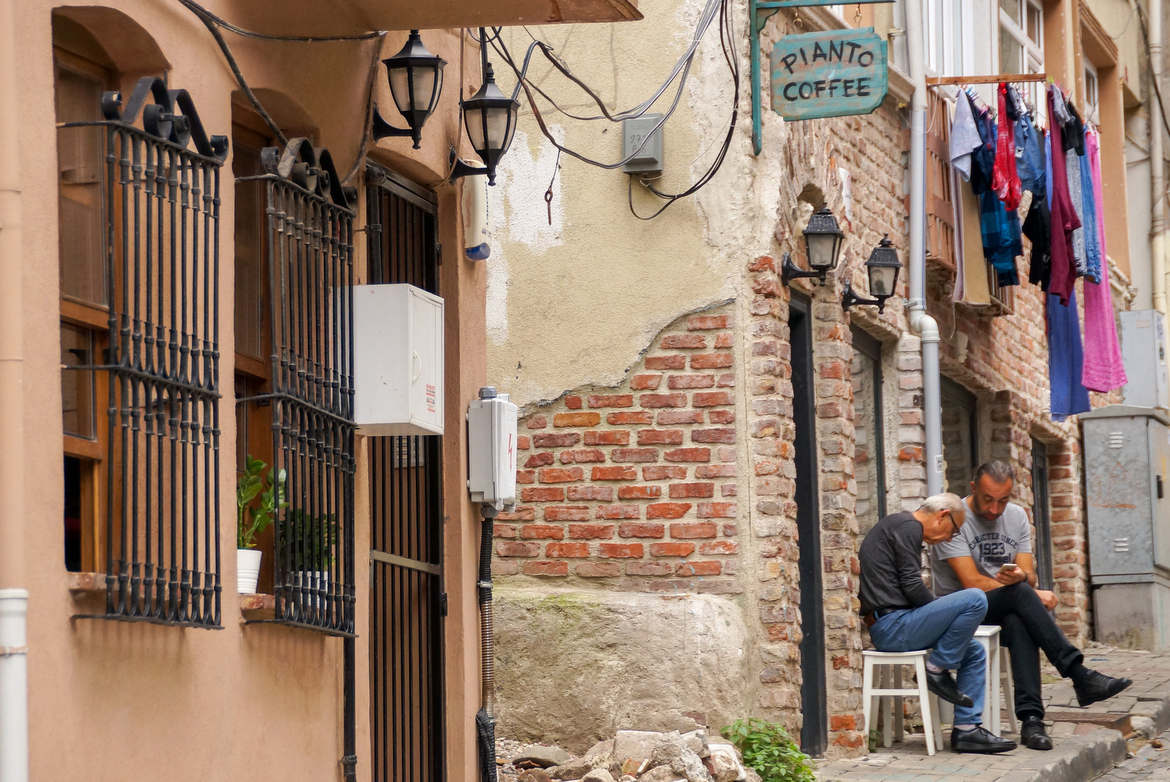
The crumbling buildings, boarded-up shops and cracked facades give the sense you’ve stumbled off Istanbul’s well-worn tourist trail. But these days it’s not so off the beaten path.
A few years ago Fener-Balat, where the history stretches back to the start of Ottoman rule, experienced a renaissance. It’s now a collision point for religious and liberal Turkey as the effects of gentrification ripple through the neighbourhoods.
After finishing our morning çay, we get lost in Balat and its juxtaposing worlds.

Next to the Ahrida Synagogue, one of the oldest synagogues in Istanbul, is the hip-looking Coffee Department, which roasts its own beans.
Across the road Cumbalı Kahve promotes itself as ‘the best coffee shop’. And a couple of doors down Aşk-ı Rüba kafe stands out with its antique chairs and bright murals.
Further down the street in another cafe a film crew is staging shots.
Kürkçü Çeşmesi and Vodina Caddesi is a strip of cafes, boutiques, art galleries and vintage shops.
The usual small stools so popular in Turkey have been traded for more fashionable seating at tables occasionally covered with a crocheted blanket. Instead of kebabs, A-frame boards outside cafes offer veggie wraps and salads. Vintage luggage sits in piles outside antique shops and street art and murals brighten otherwise dull spaces.
Stencil graffiti with the words ‘This is NOT Instagram’ reflects the changing attitude, and visitors, to this historic part of Istanbul.
But as quickly as we stumble on Balat’s strange, hipster world, we lose it again, as we walk away from the water into the residential area rising up the hill.
One turn and we pass a parked truck loaded with watermelons. Men on stools on the sidewalk drink tea, while a street vendor sells food. A few more turns and the streets are shaded by washing and Turkish flags strung between the tall buildings.
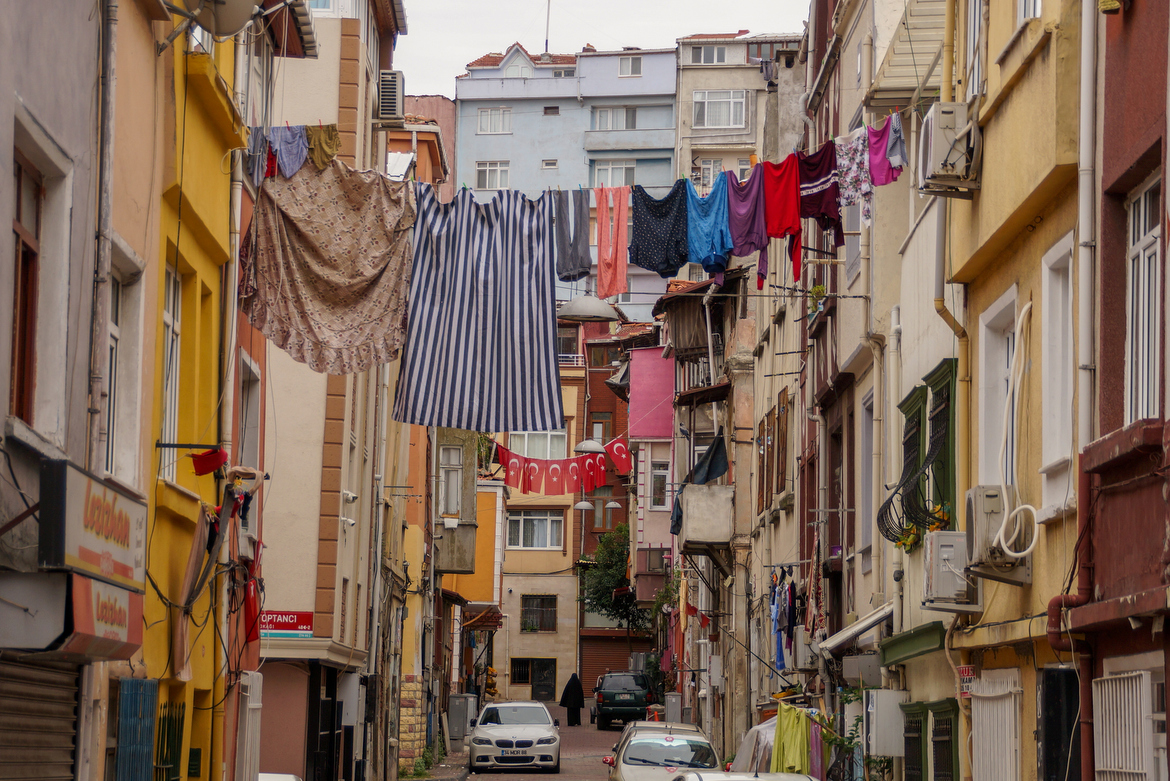
Back on Vodina St, we take a seat outside 1200 Derece , a glass studio-cum-cafe. Before ordering, we are asked if we would like wifi; yet another sign of the neighbourhood’s changing character.
Across from us is a stone fence guarding the Metrology Church and the ruins of the Panagia Paramythia Church. Behind us, on the banks of the Golden Horn, stands the Bulgarian St Stephen Church. These buildings are why it’s hard to find anything stronger than tea around here. Laws restrict the sale of alcohol near religious sites and the number of churches, mosques, synagogues in the neighbourhood mean a religious site is rarely far away.
Our tea is served in delicate glasses, with matching glass teaspoons. It’s all handcrafted onsite.
We get chatting to our bohemian waiter who tells us the changes in the neighbourhood have been swift. “Google Maps is very different,” he says, explaining how the appearance of the street has changed in just three or four years.
Now, the tourists are easy to spot, but this part of the city also attracts plenty of Istanbul locals.
“There’s nowhere in Istanbul like this.”
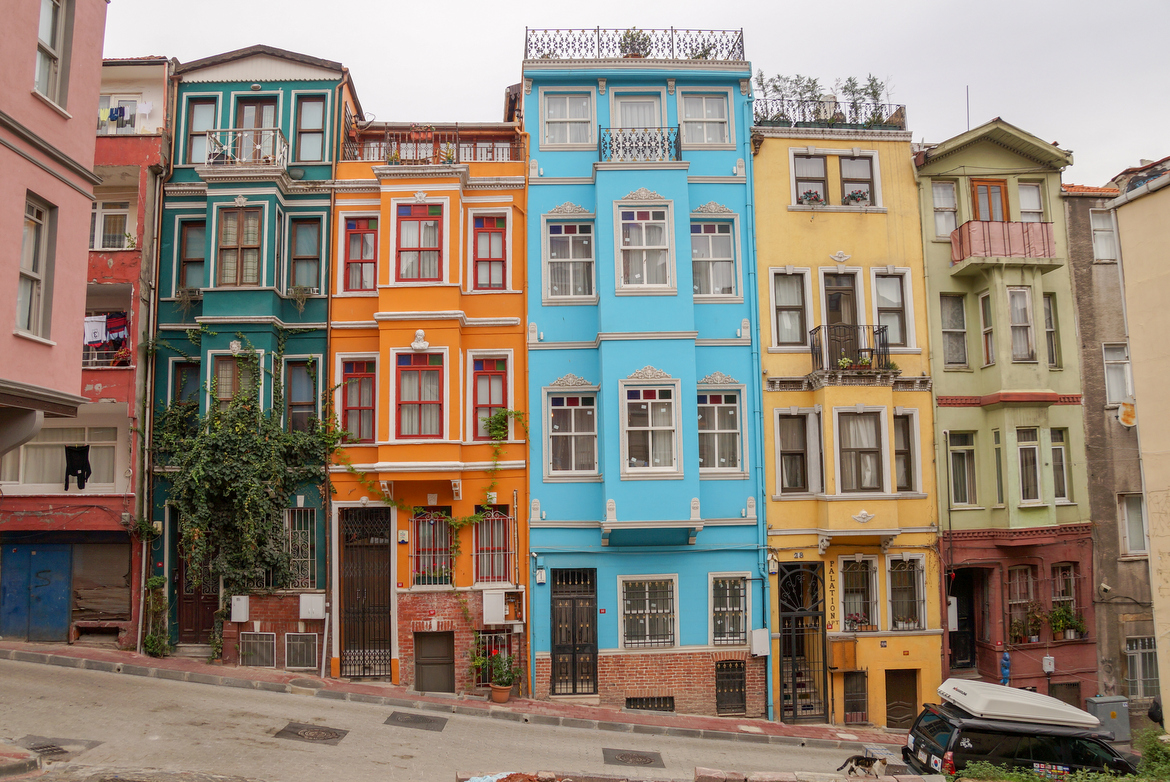
It isn’t just the growing cafe scene that brings people to explore Balat and Fener.
Both neighbourhoods were once thriving economic areas, but have endured political and cultural changes, particularly since the First World War, that haven’t always been kind. Earthquakes and fires in the late 1800s claimed many buildings. In 1955 the city’s Greek community was targeted in the Istanbul riots, after which much of the area’s non-Muslim residents left.
The beautiful architecture fell into disrepair as people lacked the money to care for their traditional wooden homes. But as the neighbourhoods sit within the UNESCO-listed Historic Areas of Istanbul site, significant efforts have been made to restore the once-elegant buildings.
The result has put Balat and Fener on Istanbul’s Instagram trail.
The colourful houses hide among a maze of unremarkable streets. But turn onto Merdivenli Ykş, Kiremit Cd or Sancaktar Ykş and you’ll most likely be greeted by fellow tourists also taking in this unsuspecting sight.
The houses, the cafes, the art, the vendors carrying trays of simit on their heads, the women walking down the street with their shopping, the men sipping tea on the sidewalk; exploring Balat and Fener means getting lost in a merger of history and the future. And it’s very photogenic.

The transformation of the neighbourhoods is still unfolding and the area will continue to change as more tourists and visitors discover it, but it’s not at risk of losing its rough edges anytime soon.
In many ways it’s still the cultural melting pot it always has been, just a little more hip.














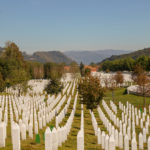
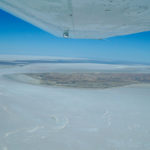
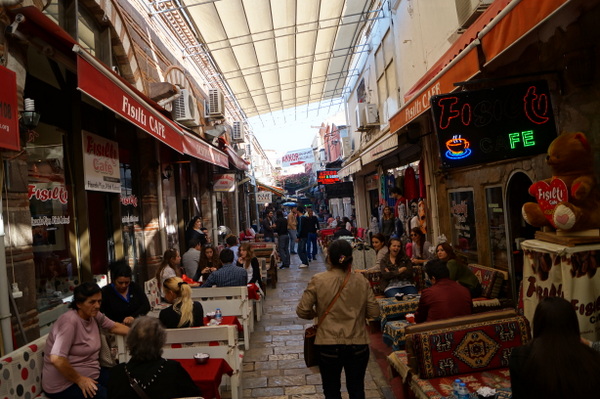
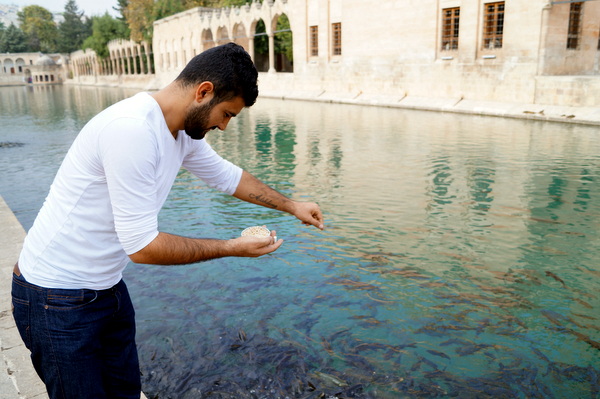
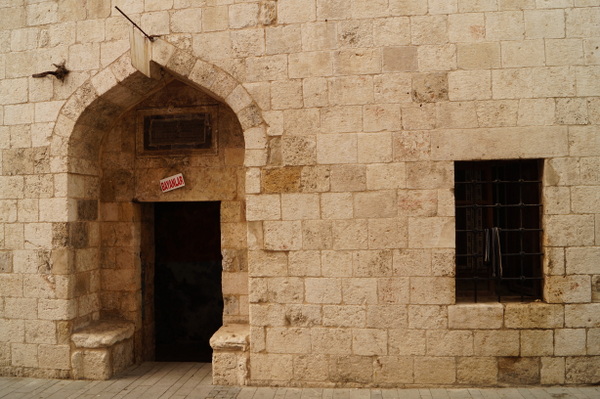
2 Comments
Its just awesome.Very much excited to visit after looking these scenarios.
i almost got some sleep in istanbul; i had chosen the pink hotel and a room above the constant jack-hammering where they were excavating for the tunnel under the Bosphorus for the new traffic tunnel, which had come to an almost halt due to the finding of ancient relics in a now archeological site – i came to like that hotel – i had arrived for the 2nd time in the city via the train from Thessaloniki, Greece; i had stayed at the hotel RON, and departed carrying the door key – i paid the bartender on the train 5 euros to return the key to the hotel as the train was returning that night to Thess. The border crossing is chaotic, and requires a bus transfer to the Turkish side to await the train from Sofia or Bucharest. the station master prepares delicious ham and tomato sandwiches – i recommend them. The train station is beside an army camp with high metal fences and soldiers carrying automatic weapons – i entertained them with my green bird puppet – they were actually smiling – someone took my photo holding the puppet but they did not email me with a copy – i was disappointed…. I can recommend The Albatross Hotel, at the rear of the Blue Mosque on the hillside in Istanbul and the Eboy hotel… and visit the Water Reservoir opposite the yellow wooden police station near the Mosque…the turks and Arabs were always ahead of their time in science, apart from railway connections – There was even a train all the way to Baghdad in the book – “8.55 to Baghdad” the Orient Express from London to Baghdad – can you believe that?